Top 10 GCC contractors by country
29 March 2023

This article is part two of MEED's 2023 construction contractor ranking. The first part, MEED's 2023 top 10 GCC contractors, can be accessed here. Key points include:
> Sentiment runs ahead of construction activity
> Improved outlook for the Gulf region’s construction market is not reflected in the 2023 contractor ranking
> Nesma & Partners retains its position as the most active GCC contractor, but its total value of work this year is down 22 per cent on 2022
 PPP progress spurs Bahrain real estate
PPP progress spurs Bahrain real estate
Bahrain is traditionally the smallest construction market in the GCC, a position that reflects the island kingdom’s small population and land area, combined with energy exports that are limited when compared to its neighbours.
China Machinery Engineering Corporation continues to lead the ranking in 2023 with $689m-worth of work at the execution phase thanks to its contract to build the East Sitra development for the Housing Ministry.
In second position is Sharjah-based Al-Hamad Building Contracting, which is working on $560m-worth of projects. The contractor was the third-ranked contractor last year.
In third position this year is the local Kooheji Contractors with $449m of projects. Its rise from eighth position in the ranking reflects the resurgent property market in Bahrain. The firm is part of the Kooheji group, which is developing new real estate projects in Manama, including the Onyx Sky View project that was launched at the end of last year.
Turkey’s Tav Construction – which was ranked fifth last year as it completed work at the airport – has now left the top 10. Its position in the ranking since 2016 demonstrated the importance of major projects to the Bahrain market.
While there has been a lull in construction activity in Bahrain over the past two years, major new projects are planned, including the Bahrain Metro and a second causeway bridge to Saudi Arabia.
The Transport & Communications Ministry has prequalified companies for the metro, which will be developed as a public-private partnership (PPP). Similarly, the King Fahd Causeway Authority has approached contractors about working on the causeway, which is also being developed as a PPP.
 Airport contractor still leads in Kuwait
Airport contractor still leads in Kuwait
Kuwait’s ranking continues to be led by Limak with $5bn-worth of work at the execution stage. The Turkish contractor remains active on the expansion of Kuwait International airport. It could be the last year that Limak heads the Kuwait ranking, however, as the airport work is due for completion this year.
The rest of the contractors below Limak have endured a significant drop in the value of the projects they are engaged on. The average total value of projects being worked on for the top 10 in 2023 is $1.1bn, down from $1.7bn in 2022.
Occupying the second and third places in this year’s ranking are two of Kuwait’s largest contracting companies. Ahmadiah Contracting & Trading Company is in second place with $1.1bn of work, followed by Mohammed Abdulmohsin al-Kharafi & Sons with $900m.
With Limak’s work at the airport coming to a close, these two companies are likely to return to the top of the Kuwait ranking in 2024.
The only other international companies in the Kuwait top 10 are Italy’s Impresa Pizarotti in sixth place with $730m of work and India’s Shapoorji Pallonji in seventh place with $687m of work at the execution stage.
 Little change in Oman as big projects loom
Little change in Oman as big projects loom
Oman’s contractor ranking has remained largely static this year. The local Galfar Engineering & Contracting tops the list again with $1.05bn of work, down slightly on the $1.1bn of projects it was working on in 2022.
Last year’s second- and third-ranked contractors have switched places. The local Al-Adrak Trading & Contracting Company is now ranked second with $800m of work and the local Al-Tasnim Enterprises is ranked third with $770m.
India’s Larsen & Toubro is the only international company that makes the top 10 this year. It is ranked number five with projects worth $280m at the execution stage.
International companies could figure more prominently in the ranking in future. Oman-Etihad Rail Company is expected to tender construction contracts connecting Oman and the UAE later this year, and it is likely that international contractors will be involved in delivering that project.
Similarly, tentative steps have been taken on the proposed Muscat Metro project. This scheme is unlikely to move into construction by next year, but if it goes ahead, it will offer more significant opportunities for international players.
 Qatar numbers drop in post-World Cup lull
Qatar numbers drop in post-World Cup lull
After years of doubt and criticism, Qatar’s construction market successfully delivered the infrastructure, stadiums and hotels needed to host the Fifa World Cup last year.
The problem is, with that 10-year building programme now complete, there are few projects left for contractors to work on. This is most clearly shown in the 2023 contractor ranking by the local Urbacon Trading & Contracting Company’s numbers.
This year, the firm has $1.8bn-worth of projects at the execution stage, which is significantly less than the $4.9bn it was working on in 2022.
To counter the decline in the domestic market, Urbacon is pursing opportunities internationally. The company recently secured two major contracts in Saudi Arabia for the construction of entertainment complexes.
Other contractors are likely to pursue a similar strategy as they face fewer new Qatari projects moving into the construction phase in the near term.
There is a hope that major schemes such as the Doha Bay Crossing and extensions to the metro will move ahead, however. If these schemes do progress, then they are likely to spend the next year in the design and tendering phases before they move into construction.
 Gigaprojects shake up Saudi ranking
Gigaprojects shake up Saudi ranking
Saudi Arabia is the region’s most exciting construction market in 2023. After six years of planning, construction work is now well under way on the kingdom’s five gigaprojects – Neom, Qiddiya, The Red Sea, Roshn and Diriyah Gate – as well as on a host of other masterplan projects such as Sports Boulevard and King Salman Park.
As construction ramps up, logic would dictate that the value of projects that contractors are working on would also increase. Somewhat surprisingly, this has not been the case, and in the 2023 ranking, most of the top 10 are working on a lower value of projects than they were in 2022.
This could be explained by the fact that several legacy projects in the kingdom have been completed in the past year, but it also suggests that while there is an expectation of a significant ramp-up in construction activity, it has not quite happened yet.
The top-ranked contractor, Nesma & Partners, shows this trend clearly. In 2022 it was working on $6.8bn of projects. In 2023 it is working on $5.3bn.
The second-ranked Saudi Binladin Group has experienced a similar decline, with its total value falling from $6.5bn to $4bn.
There are several explanations for this trend. Some say projects are moving into construction more slowly than expected as they get bogged down in the design phase, and that decision making at the senior level is hampering design and procurement decisions. Others say that the market is already operating at full capacity and can not take on more work.
Some respite for the market is in sight. This year, the Public Investment Fund invested in four contractors: Almabani, Nesma, El-Seif Engineering & Construction and Al-Bawani. These firms are expected to grow rapidly and take a leading role in delivering projects for Vision 2030.
Other companies are also expanding. One is the local Modern Building Leaders, which has entered the top 10 this year at number eight, with $2.3bn of work at the execution stage. Its main project wins have been the Royal Arts Complex in Riyadh and the expansion of Duba Port.
With so many large projects expected to move into construction in the next year, there will be plenty of opportunities for contractors in Saudi Arabia to build up their order books. This should mean that the kingdom’s ranking will be a dynamic one in the years ahead.
 All change in the UAE construction market
All change in the UAE construction market
The top 10 contractor ranking for the UAE shows a shift in the order of companies and the growing dominance of Abu Dhabi-based contractors, as well as a general decline in the value of projects being worked on.
National Marine Dredging Company (NMDC) has taken the top spot with projects worth $2.3bn. The Abu Dhabi-listed contractor has moved up from fourth position in the 2022 ranking.
NMDC replaces Beijing-based China State Construction Engineering Corporation, which was at the top of the 2022 ranking with project values worth $2.6bn. The Chinese firm has dropped to third place this year with projects worth $1.6bn. Its fall from the top of the ranking can largely be explained by it completing a series of real estate projects in Dubai in the past year.
China State’s orderbooks are expected to swell this year as Dubai’s property market remains buoyant and major projects start moving into construction. An example is Wasl’s Island project, which involves the construction of several high-end hotels on a man-made island close to Marsa al-Arab.
Abu Dhabi-based Trojan General Contracting has moved up from the sixth position in 2022 to the second position in 2023, with project values worth $1.7bn.
Another Abu Dhabi-based firm, Al-Amry Transport & General Contracting, has moved into the top 10 to occupy the fourth position in the 2023 raking, with $1.2bn of projects at the execution phase.
In fifth position is iBuild, which is working on $1.2bn of projects. The company is part of Innovo Holding UK, a London-registered firm with ownership links to ASGC, which occupied 10th position in the 2023 ranking with $774m of projects at the executions stage.
Although they are separate companies, if iBuild and ASGC were taken together they would be working on $2bn-worth of projects and would occupy the second position in the ranking.
Another contractor in the ranking that has gone through corporate change is Dubai-based Alec. Ranked seventh with $919m of work, it completed the acquisition of Abu Dhabi-based Target Engineering last year, giving it a foothold in the oil and gas market. Both Alec and Target now aim to double their turnover in the next five years, mostly with work from the UAE and Saudi Arabia.
 MEED's 2023 top 10 GCC contractors
MEED's 2023 top 10 GCC contractors
Exclusive from Meed
-
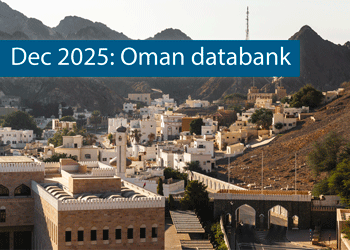 Oman’s growth forecast points upwards
Oman’s growth forecast points upwards24 December 2025
-
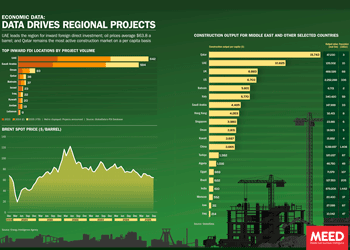 December 2025: Data drives regional projects
December 2025: Data drives regional projects23 December 2025
-
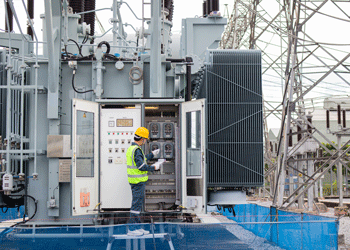 Local firm bids lowest for Kuwait substation deal
Local firm bids lowest for Kuwait substation deal22 December 2025
-
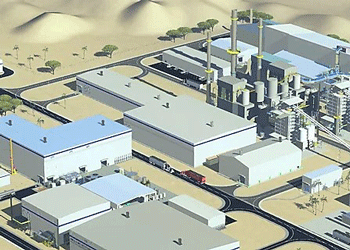 Saudi-Dutch JV awards ‘supercentre’ metals reclamation project
Saudi-Dutch JV awards ‘supercentre’ metals reclamation project22 December 2025
-
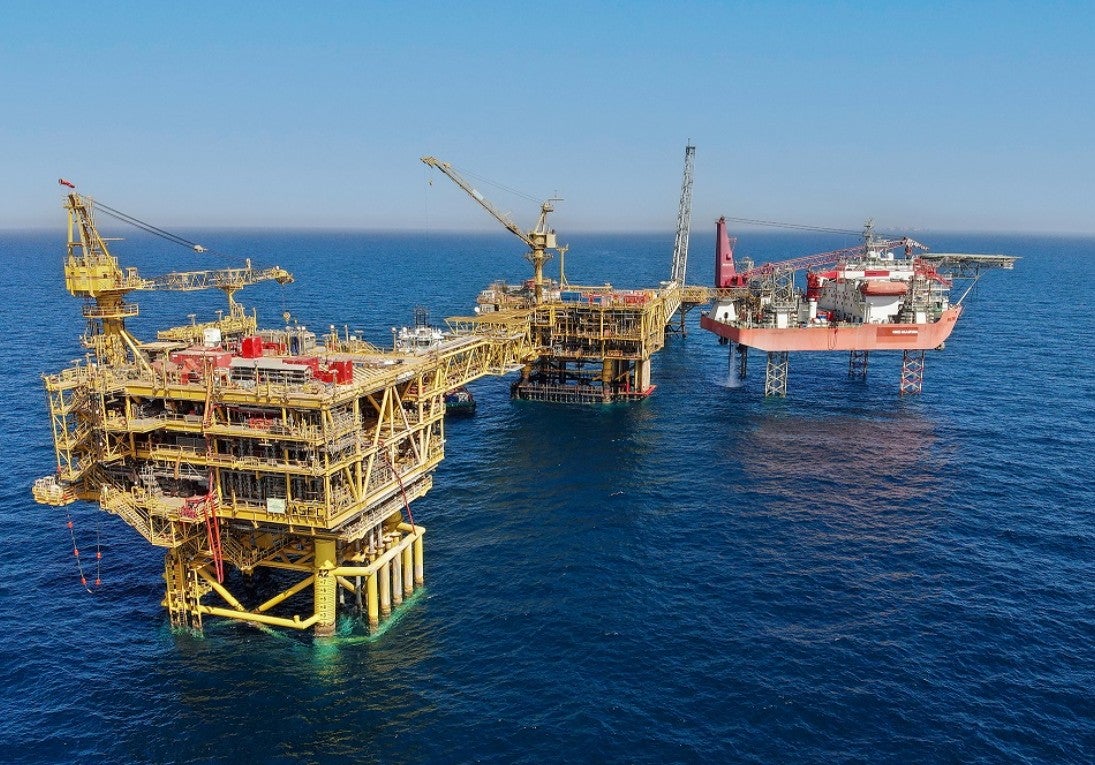 QatarEnergy LNG awards $4bn gas project package
QatarEnergy LNG awards $4bn gas project package22 December 2025
All of this is only 1% of what MEED.com has to offer
Subscribe now and unlock all the 153,671 articles on MEED.com
- All the latest news, data, and market intelligence across MENA at your fingerprints
- First-hand updates and inside information on projects, clients and competitors that matter to you
- 20 years' archive of information, data, and news for you to access at your convenience
- Strategize to succeed and minimise risks with timely analysis of current and future market trends

Related Articles
-
 Oman’s growth forecast points upwards
Oman’s growth forecast points upwards24 December 2025

MEED’s January 2026 report on Oman includes:
> COMMENT: Oman steadies growth with strategic restraint
> GVT & ECONOMY: Oman pursues diversification amid regional concerns
> BANKING: Oman banks feel impact of stronger economy
> OIL & GAS: LNG goals galvanise Oman’s oil and gas sector
> POWER & WATER: Oman prepares for a wave of IPP awards
> CONSTRUCTION: Momentum builds in construction sectorTo see previous issues of MEED Business Review, please click herehttps://image.digitalinsightresearch.in/uploads/NewsArticle/15306449/main.gif -
 December 2025: Data drives regional projects
December 2025: Data drives regional projects23 December 2025
Click here to download the PDF
Includes: Top inward FDI locations by project volume | Brent spot price | Construction output
MEED’s January 2026 report on Oman includes:
> COMMENT: Oman steadies growth with strategic restraint
> ECONOMY: Oman pursues diversification amid regional concerns
> BANKING: Oman banks feel impact of stronger economy
> OIL & GAS: LNG goals galvanise Oman’s oil and gas sector
> POWER & WATER: Oman prepares for a wave of IPP awards
> CONSTRUCTION: Momentum builds in construction sectorTo see previous issues of MEED Business Review, please click herehttps://image.digitalinsightresearch.in/uploads/NewsArticle/15306140/main.gif -
 Local firm bids lowest for Kuwait substation deal
Local firm bids lowest for Kuwait substation deal22 December 2025
The local Al-Ahleia Switchgear Company has submitted the lowest price of KD33.9m ($110.3m) for a contract to build a 400/132/11 kV substation at the South Surra township for Kuwait’s Public Authority for Housing Welfare (PAHW).
The bid was marginally lower than the two other offers of KD35.1m and KD35.5m submitted respectively by Saudi Arabia’s National Contracting Company (NCC) and India’s Larsen & Toubro.
PAHW is expected to take about three months to evaluate the prices before selecting the successful contractor.
The project is one of several transmission and distribution projects either out to bid or recently awarded by Kuwait’s main affordable housing client.
This year alone, it has awarded two contracts worth more than $100m for cable works at its 1Z, 2Z, 3Z and 4Z 400kV substations at Al-Istiqlal City, and two deals totalling just under $280m for the construction of seven 132/11kV substations in the same township.
Most recently, it has tendered two contracts to build seven 132/11kV main substations at its affordable housing project, west of Kuwait City. The bid deadline for the two deals covering the MS-01 through to MS-08 substations is 8 January.
https://image.digitalinsightresearch.in/uploads/NewsArticle/15305745/main.gif -
 Saudi-Dutch JV awards ‘supercentre’ metals reclamation project
Saudi-Dutch JV awards ‘supercentre’ metals reclamation project22 December 2025
The local Advanced Circular Materials Company (ACMC), a joint venture of the Netherlands-based Shell & AMG Recycling BV (SARBV) and local firm United Company for Industry (UCI), has awarded the engineering, procurement and construction (EPC) contract for the first phase of its $500m-plus metals reclamation complex in Jubail.
The contract, estimated to be worth in excess of $200m, was won by China TianChen Engineering Corporation (TCC), a subsidiary of China National Chemical Engineering Company (CNCEC), following the issue of the tender in July 2024.
Under the terms of the deal, TCC will process gasification ash generated at Saudi Aramco’s Jizan refining complex on the Red Sea coast to produce battery-grade vanadium oxide and vanadium electrolyte for vanadium redox flow batteries. AMG will provide the licensed technology required for the production process.
The works are the first of four planned phases at the catalyst and gasification ash recycling ‘Supercentre’, which is located at the PlasChem Park in Jubail Industrial City 2 alongside the Sadara integrated refining and petrochemical complex.
Phase 2 will expand the facility to process spent catalysts from heavy oil upgrading facilities to produce ferrovanadium for the steel industry and/or additional battery-grade vanadium oxide.
Phase 3 involves installing a manufacturing facility for residue-upgrading catalysts.
In the fourth phase, a vanadium electrolyte production plant will be developed.
The developers expect a total reduction of 3.6 million metric tonnes of carbon dioxide emissions a year when the four phases of the project are commissioned.
SARBV first announced its intention to build a metal reclamation and catalyst manufacturing facility in Saudi Arabia in November 2019. The kingdom’s Ministry of Investment, then known as the Saudi Arabian General Investment Authority (Sagia), supported the project.
In July 2022, SARBV and UCI signed the agreement to formalise their joint venture and build the proposed facility.
The project has received support from Saudi Aramco’s Namaat industrial investment programme. Aramco, at the time, also signed an agreement with the joint venture to offtake vanadium-bearing gasification ash from its Jizan refining complex.
Photo credit: SARBV
https://image.digitalinsightresearch.in/uploads/NewsArticle/15305326/main.gif -
 QatarEnergy LNG awards $4bn gas project package
QatarEnergy LNG awards $4bn gas project package22 December 2025
QatarEnergy LNG, a subsidiary of state-owned QatarEnergy, has awarded the main engineering, procurement, construction and installation (EPCI) contract for a major package for the second phase of its North Field Production Sustainability (NFPS) project.A consortium comprising the Italian contractor Saipem and state-owned China Offshore Oil Engineering Company (COOEC) has secured the EPCI contract for the COMP5 package. The contract value is $4bn, with Saipem declaring its share to be worth $3.1bn.
Milan-headquartered Saipem said the contract will run for about five years. The scope of work comprises engineering, procurement, fabrication and installation of two compression complexes, each including a compression platform, a living quarters platform, a flare platform supporting the gas combustion system, and the related interconnecting bridges. Each complex will have a total weight of about 68,000 tonnes.
Offshore installation operations will be carried out by Saipem’s De He construction vessel in 2029 and 2030.
MEED previously reported that the following contractors submitted bids for the NFPS phase two COMP5 package:
- Larsen & Toubro Energy Hydrocarbon (India)
- McDermott (US)
- Saipem/China Offshore Oil Engineering Company (Italy/China)
QatarEnergy LNG, formerly Qatargas, is said to have issued the tender for the NFPS phase two COMP5 package in the first quarter of the year.
Contractors submitted technical bids for the COMP5 package in late June, while commercial bids were submitted by 8 October, as per sources.
Based upon initial evaluation of bids by QatarEnergy LNG, L&TEH has emerged as the lowest bidder for the COMP5 package, followed by McDermott, with the consortium of Saipem and COOEC in third place, MEED reported in late October.
In the weeks following that, the project operator is said to have engaged all bidders for a final round of negotiations, during which the consortium of Saipem and COOEC is believed to have “clinched the deal”, according to sources.
The detailed scope of work on the COMP5 package covers the EPCI work on the following:
- Two gas compression platforms, each weighing 30,000-35,000 tonnes, plus jacket
- Two living quarters platforms, plus jacket
- Two gas flare platforms, plus jacket
- Brownfield modification work at two complexes
NFPS scheme
QatarEnergy’s North Field liquefied natural gas (LNG) expansion programme requires the state enterprise to pump large volumes of gas from the North Field offshore reserve to feed the three phases of the estimated $40bn-plus programme.
QatarEnergy has already invested billions of dollars in engineering, procurement and construction works on the two phases of the NFPS project, which aims to maintain steady gas feedstock for the North Field LNG expansion phases.
The second NFPS phase will mainly involve building gas compression facilities to sustain and gradually increase gas production from Qatar’s offshore North Field gas reserve over the long term.
Saipem has been the most successful contractor on the second NFPS phase, securing work worth a total of $8.5bn.
QatarEnergy LNG awarded Saipem a $4.5bn order in October 2022 to build and install gas compression facilities. The main scope of work on the package, which is known as EPCI 2, covers two large gas compression complexes that will comprise decks, jackets, topsides, interconnecting bridges, flare platforms, living quarters and interface modules.
The gas compression complexes – CP65 and CP75 – will weigh 62,000 tonnes and 63,000 tonnes, respectively, and will be the largest fixed steel jacket compression platforms ever built.
Following that, Saipem won combined packages COMP3A and COMP3B of the NFPS project’s second phase in September last year.
The scope of work on the combined packages encompasses the EPCI of a total of six platforms, approximately 100 kilometres (km) of corrosion resistance alloy rigid subsea pipelines of 28-inches and 24-inches diameter, 100km of subsea composite cables, 150km of fibre optic cables and several other subsea units.
Separately, QatarEnergy LNG awarded McDermott the contract for the NFPS second phase package known as EPCI 1, or COMP1, in July 2023. The scope of work on the estimated $1bn-plus contract is to install a subsea gas pipeline network at the North Field gas development.
In March this year, India’s Larsen & Toubro Energy Hydrocarbon (LTEH) won the main contract for the combined 4A and 4B package, which is the fourth package of the second phase of the NFPS project and is estimated to be valued at $4bn-$5bn.
The main scope of work on the package is the EPCI of two large gas compression systems that will be known as CP8S and CP4N, each weighing 25,000-35,000 tonnes. The contract scope also includes compression platforms, flare gas platforms and other associated structures.
LTHE sub-contracted detailed engineering and design works on the combined 4A and 4B package to French contractor Technip Energies.
NFPS first phase
Saipem is also executing the EPCI works on the entire first phase of the NFPS project, which consists of two main packages.
Through the first phase of the NFPS scheme, QatarEnergy LNG aims to increase the early gas field production capacity of the North Field offshore development to 110 million tonnes a year.
QatarEnergy LNG awarded Saipem the contract for the EPCI package in February 2021. The package is the larger of the two NFPS phase one packages and has a value of $1.7bn.
Saipem’s scope of work on the EPCI package encompasses building several offshore facilities for extracting and transporting natural gas, including platforms, supporting and connecting structures, subsea cables and anti-corrosion internally clad pipelines.
The scope of work also includes decommissioning a pipeline and other significant modifications to existing offshore facilities.
In addition, in April 2021, QatarEnergy LNG awarded Saipem two options for additional work within the EPCI package, worth about $350m.
QatarEnergy LNG awarded Saipem the second package of the NFPS phase one project, estimated to be worth $1bn, in March 2021.
Saipem’s scope of work on the package, which is known as EPCL, mainly covers installing three offshore export trunklines running almost 300km from their respective offshore platforms to the QatarEnergy LNG north and south plants located in Ras Laffan Industrial City.
Saipem performed the front-end engineering and design work on the main production package of the first phase of the NFPS as part of a $20m contract that it was awarded in January 2019. This provided a competitive advantage to the Italian contractor in its bid to win the package.
https://image.digitalinsightresearch.in/uploads/NewsArticle/15305330/main2239.jpg

